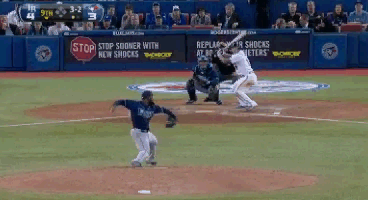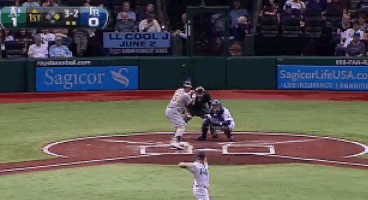![]() Things have really come together for the surging Tampa Bay Rays in the past month. With yesterday’s big win in Boston, they’ve won six straight games and a franchise-record 21 of their last 25.
Things have really come together for the surging Tampa Bay Rays in the past month. With yesterday’s big win in Boston, they’ve won six straight games and a franchise-record 21 of their last 25.
Let’s take a look at how the Rays came from being last place in the AL East to just a half game out of first place and having the third-best record in baseball.
The Pitching
Great starting pitching has propelled the Rays into the great position they’re in right now. Despite Alex Cobb’s absence, David Price’s return to ace form, Chris Archer’s impressive pitching and turnarounds from Matt Moore and Jeremy Hellickson have the Tampa Bay’s rotation looking like its 2012 self.
Rays starting pitching has delivered a remarkable 17 quality starts in its last 19 games.
Price has been terrific since his return from the disabled list, tossing two complete games while posting a stellar 1.97 ERA and allowing just one walk in four starts (32.0 IP). Moore is 6-0 with a 1.50 ERA in his last six starts, and Archer is enjoying a very strong rookie year, posting a 5-2 record with a 2.14 ERA in his last nine outings.
It hasn’t just been the starting pitching that has improved in the Rays’ winning stretch. The bullpen, which was the team’s weak spot earlier this season, has been solid as of late, blowing just one lead during the stretch.
The Offense
When you have consistent production from your offense to go along with excellent pitching, you’re going to win a lot of games. The Rays have done exactly that, putting up an impressive .282/.351/.436 slash line with a 120 wRC+ (Weighted Runs Created Plus) in July as a team.
![]()
Over half of the lineup has produced well offensively during the stretch, but nobody’s been as hot as Desmond Jennings (.378 wOBA in last 30 days) and Luke Scott (.448 wOBA).
The Rays’ offense, which is tied for second in all of baseball by wRC+ (112) has been outstanding all season, so we can expect to see this success from the lineup continue as the season progresses. If Jennings can continue to do such a great job of getting on base at the top of the lineup, this offense could soon emerge as baseball’s best.
The Defense
The Rays’ defense this year has probably been the best in team history, which is a big deal considering that it’s a franchise that prides itself on solid defense. Tampa Bay is second in the American League in UZR (26.9) and second in the MLB in fielding percentage (.990).
During the 25-game stretch, the Rays have committed just five errors. They have possibly the best fielding infield in baseball, as well as some great range in the outfield with Desmond Jennings and Sam Fuld.
The Rays are fielding to their potential, and now that they’re pitching like they can, it’s clear that they’ve really hit their stride here in July.
Read more MLB news on BleacherReport.com

